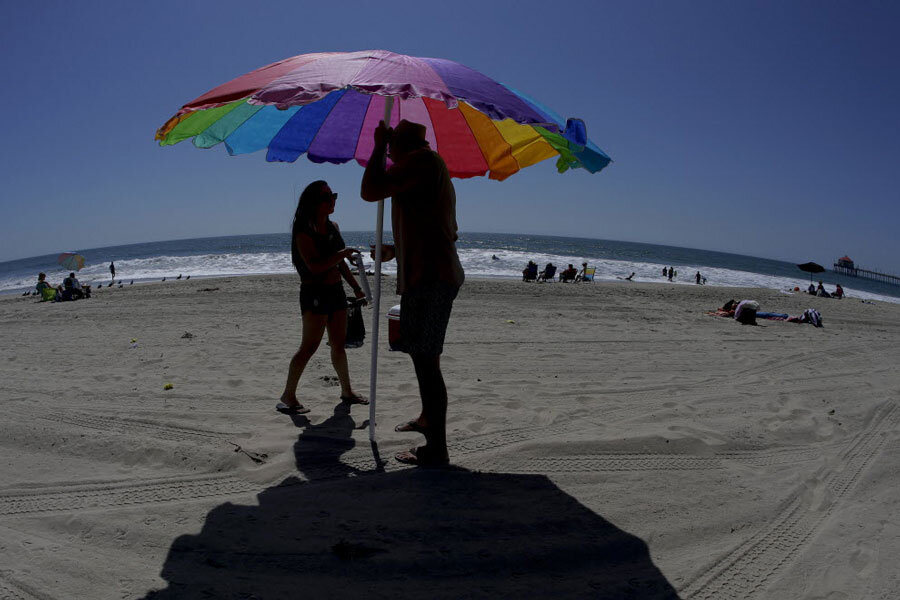Los Angeles reached 103 degrees this week. How drought is to blame
Loading...
| Los Angeles
Southern California continues to swelter under a heat wave that is producing both record temperatures and straining the region’s infrastructure with unprecedented consumer demand. On Tuesday, temperatures hit 103 in downtown Los Angeles —the highest in more than a century.
And the Department of Water and Power reported that usage soared for the first time to nearly 6,400 megawatts, leading to rolling outages throughout the city.
Hot weather is not unusual in September, but this year’s heat wave comes amid a historic drought gripping the entire state.
“The drought this heat wave is connected to is contributing to severe high temperatures,” says Chris Williams, associate professor of geography and biology at Clark University.
The process of normal evaporation tends to cool landscapes, he points out and without the moisture normally in the soil and trees or rainfall, the sun’s energy goes directly into heating the landscape. During a persistent drought, he says, “you tend to have heat waves that are worse and persist for longer periods of time.”
More droughts will lead to more heat waves, he adds.
As the wave drags on, locals have scrambled to cope, seeking relief at the beaches and one of the many cooling centers set up around the city. But, two separate storm systems working their way around the globe are still impacting So Cal residents. As Hurricane Odile works its way up from Mexico, it is sending more than normal humidity into the atmosphere, making whatever heat is in the air heavier and more oppressive.
In addition, a powerful storm system still battering Australia is sending strong surges across the Pacific, resulting in an above average number of riptides along the coast.
With some 255,000 Angelenos flocking to the beaches to escape the heat, lifeguards reported nearly 200 rescues on Tuesday alone. Students at Franklin High tweeted that they were walking out of classrooms where the air conditioning units had failed. One posted photo showed a classroom with the caption, “103.”
In an article in the Los Angeles Times, school administrators acknowledged that old equipment is failing under the intense demand. They note, however, that they have transferred students to rooms with functional air conditioning.
These system failures show that as more extreme weather becomes the norm rather than the exception, communities are going to have to adjust their priorities, says Darren Hammell, co-founder and chief strategic officer for Princeton Power Systems. While it’s not possible to prepare for every emergency, especially the more extreme events, the more frequent they become, communities need to adjust their readiness. He notes that the Northeast US had a series of three storms dubbed “Hundred Year” within a period of five years.
“Once they begin to come that frequently, you can’t call them hundred year events any more and you have to up your level of preparedness,” he says, adding that as regions look at the huge costs involved in recovery efforts, “it’s just so much bigger than the costs of upfront readiness.”
While the heat wave itself may not have a lasting impact, it should form the leading edge of a more important conversation says Accu Weather senior meteorologist Brett Anderson.
“California is the source of most of our agriculture,” he says, so the drought that is driving these extreme heat events has national impact. In addition, he notes that extreme heat increases the danger from fire ignition and makes fighting them more difficult.





